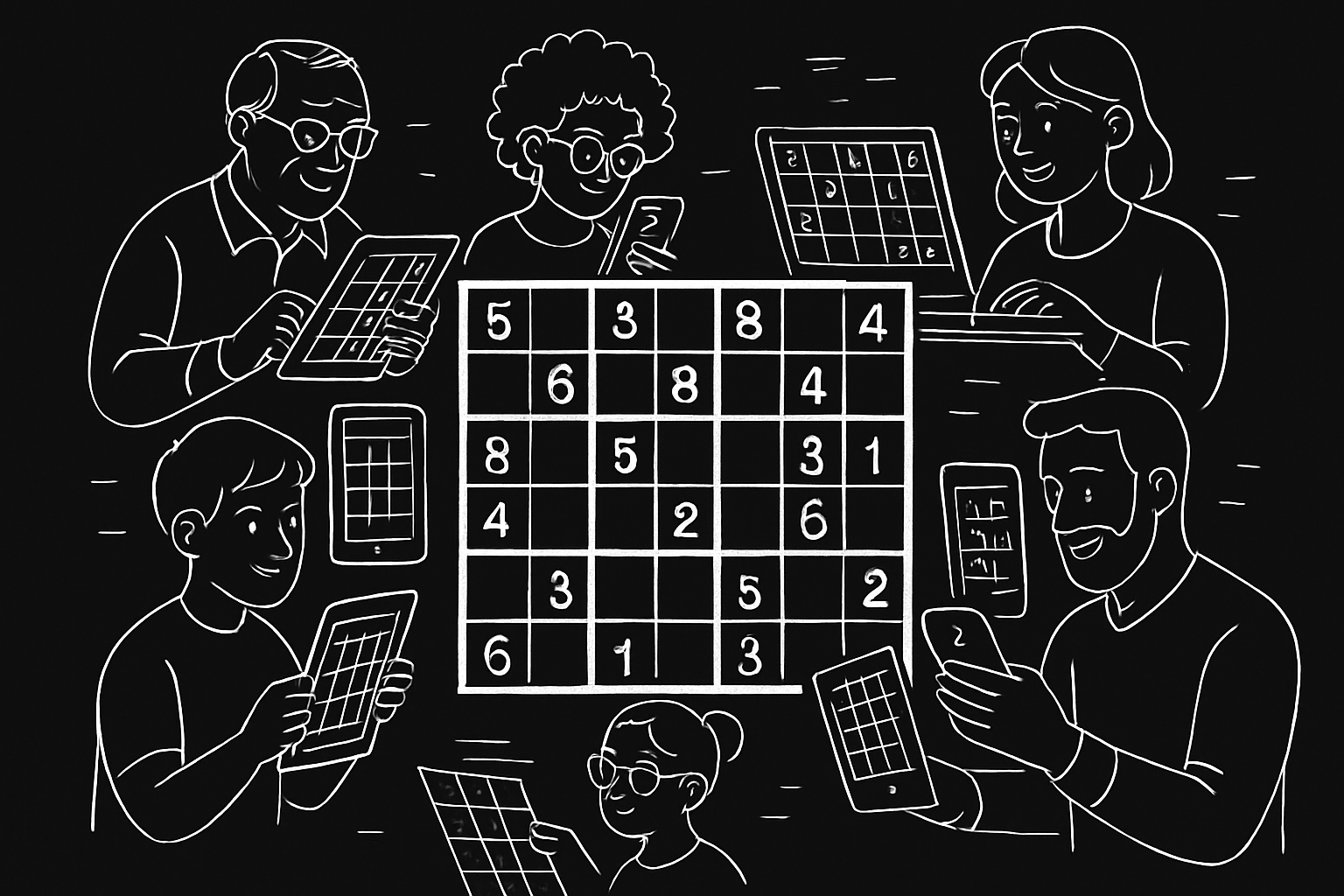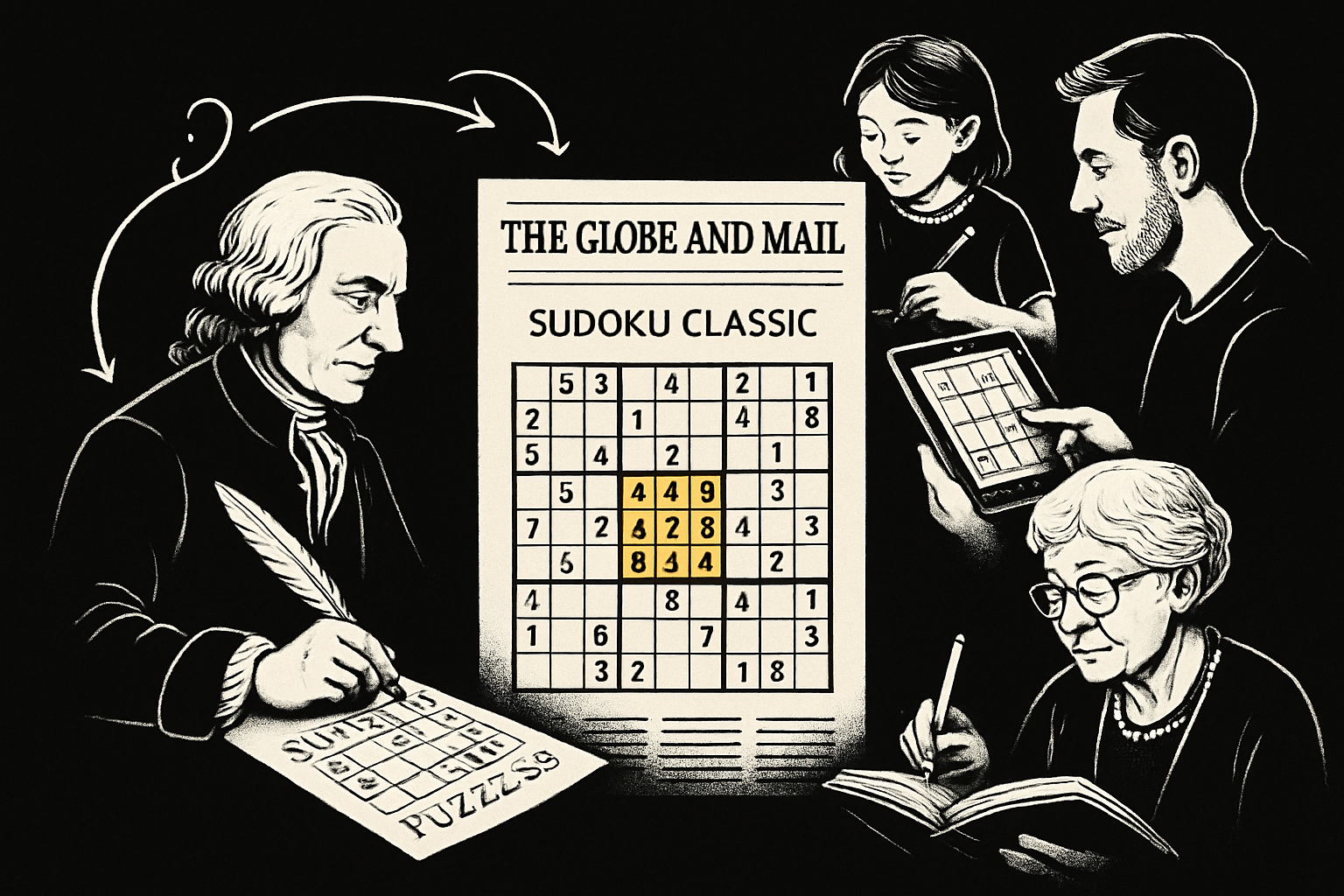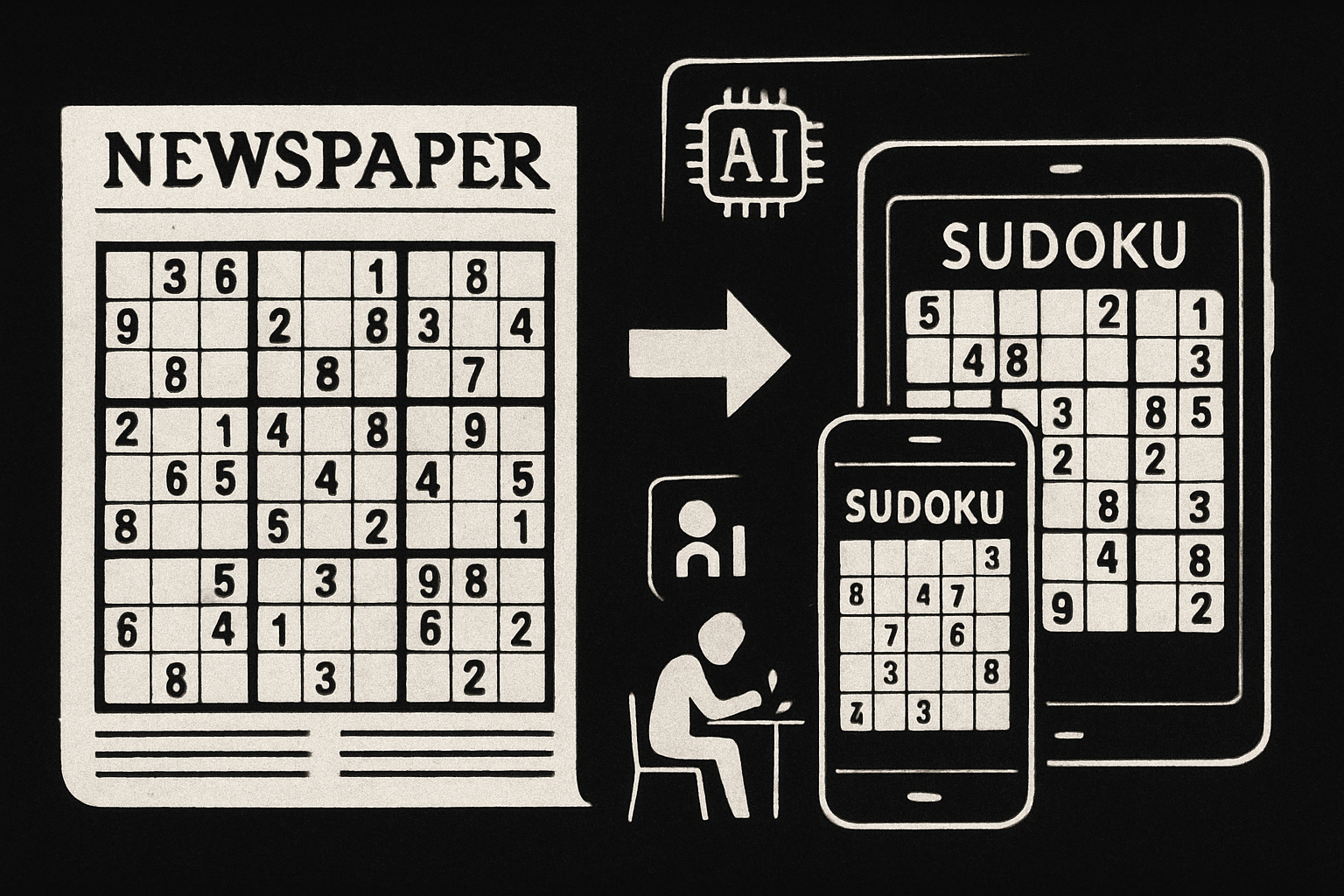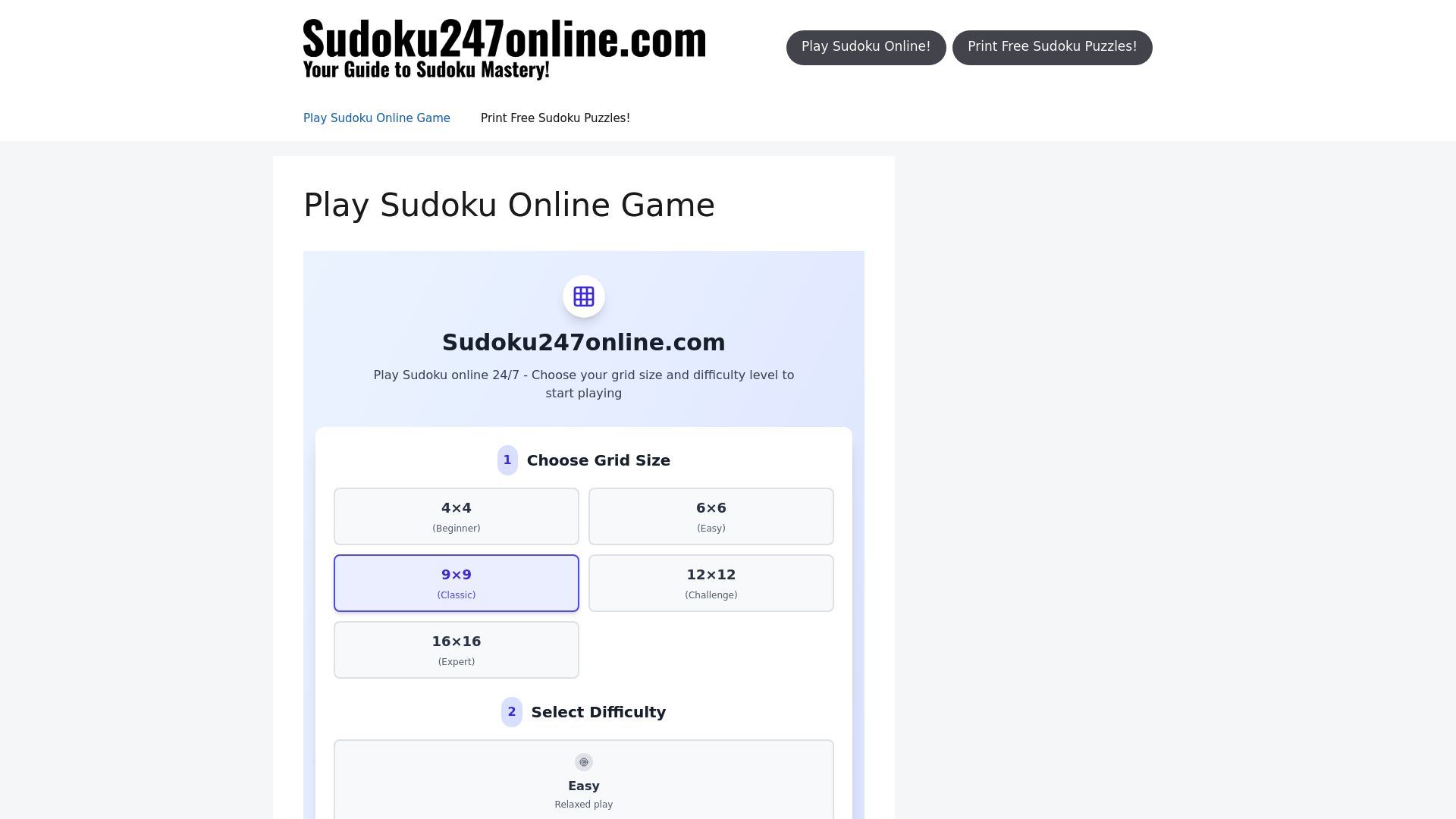Sudoku remains a timeless favorite, but sudoku new york times takes the puzzle’s challenge and prestige to new heights. Every day, millions are drawn to the NYT’s brain-teasing Sudoku, joining a vibrant community of solvers eager to test their logic and skill.
In 2025, digital access has made sudoku more approachable than ever, with features that cater to both beginners and experts. Mastering NYT Sudoku is more than just entertainment—it sharpens your mind and builds problem-solving skills for life.
This guide walks you through everything you need to know: from basic game rules and puzzle types, to advanced solving techniques, digital features, and expert tips for steady improvement.
The New York Times Sudoku: An Overview
Sudoku New York Times puzzles have become a daily ritual for millions, blending timeless logic with modern accessibility. In 2025, the NYT’s Sudoku remains a gold standard, offering fresh puzzles, unique challenges, and a vibrant solver community. This overview explores the game’s history, its one-of-a-kind features, the variety of puzzles offered, and how players can access and enjoy the experience.
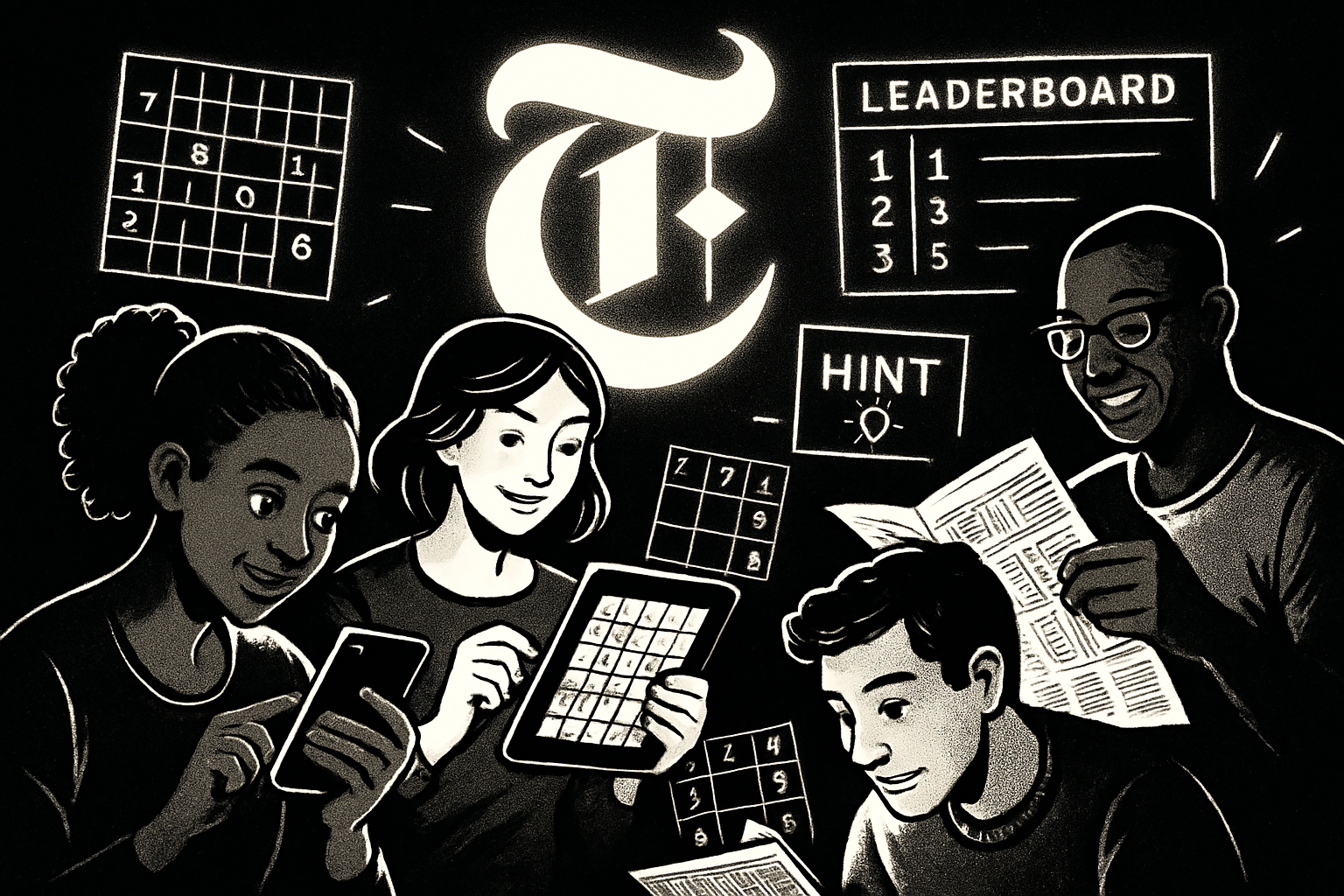
History and Rise of NYT Sudoku
Sudoku’s roots trace back to late 20th-century Japan, but its global boom began in the early 2000s. The sudoku new york times journey started when the NYT introduced daily Sudoku in its print edition, quickly captivating readers. As digital trends surged, the puzzle transitioned smoothly onto the NYT’s online platforms and mobile apps, making it accessible to a broader audience.
Today, millions tackle sudoku new york times puzzles each day, thanks to consistently high-quality curation. The NYT’s puzzle team, led by renowned editors and contributors, ensures that every puzzle meets rigorous standards. Unlike some outlets, the NYT offers a logical difficulty progression, building solver confidence over time.
Compared to other major publishers, the sudoku new york times series stands out for its editorial oversight and innovative approach. For example, weekday puzzles often focus on gradual skill-building, while weekend editions challenge even seasoned solvers with intricate logic.
What Makes NYT Sudoku Unique in 2025
In 2025, sudoku new york times puzzles set themselves apart through meticulous editorial standards and a rich selection of daily challenges. Each puzzle is handpicked and tested, ensuring both fairness and fun. The NYT Games app and website have integrated advanced features, including seamless cross-device play and real-time feedback.
Players can choose from a spectrum of difficulty levels—ranging from approachable to expert—updated every day. Community engagement is central, with user feedback shaping new puzzle formats and special themed events exclusive to sudoku new york times fans.
The NYT’s digital platform has seen a surge in user activity, reflecting the puzzle’s growing appeal. For instance, special events like “Sudoku Showdowns” attract thousands, fostering a sense of camaraderie and competition. Innovative formats, such as limited-time variants and themed grids, keep the experience fresh and rewarding.
Types of Sudoku Puzzles Featured in NYT
The sudoku new york times platform offers a diverse puzzle lineup to suit every skill level and mood. Classic 9×9 grids remain the centerpiece, challenging players to use logic and deduction. For quick sessions or beginners, mini Sudoku variants (like 4×4 and 6×6) provide a gentler introduction.
Occasionally, the NYT features creative variants such as Killer Sudoku or Jigsaw Sudoku, adding fresh twists to the traditional format. Difficulty rotates daily, with easy puzzles early in the week and harder ones on weekends. Special holiday editions and limited themes inject variety and seasonal excitement.
A 2024 data snapshot showed that classic 9×9 and mini Sudoku were the most-played types, underscoring their broad appeal. For example, weekday puzzles tend to be more accessible, while weekend editions push solvers to their limits with intricate logic challenges.
| Puzzle Type | Frequency | Best For |
|---|---|---|
| Classic 9×9 | Daily | All levels |
| Mini (4×4, 6×6) | Frequent | Beginners, quick play |
| Killer/Jigsaw | Occasional | Advanced solvers |
Accessing NYT Sudoku in 2025
Getting started with sudoku new york times puzzles has never been easier. Players can access puzzles through a NYT Games subscription, which unlocks the full archive and daily challenges. There are also free options, including a daily puzzle preview and limited access for non-subscribers.
The sudoku new york times experience is available on web browsers, the NYT Games app, and even in print editions for traditionalists. Digital features include progress tracking, streaks, and leaderboards, making it easy to monitor improvement and compete with friends.
Accessibility is a core focus, with options for adjustable fonts, color themes, and screen reader compatibility. Players can sync progress across devices or print puzzles for offline play. Curious about getting the most from your experience? Check out this NYT Sudoku Guide and Tips for insider advice on features and gameplay.
Recent data shows a shift toward digital play, with over 80% of users choosing the app or web version in 2025. Whether you’re a casual solver or aiming for the leaderboard, sudoku new york times offers an accessible and engaging puzzle adventure.
How to Play NYT Sudoku: Step-by-Step Guide
Ready to dive into the world of sudoku new york times? This guide breaks down every step, from learning the rules to sharpening your skills. Whether you’re a total beginner or aiming to solve those tricky expert puzzles, you’ll find clear instructions, practical tips, and smart strategies to help you master sudoku new york times.
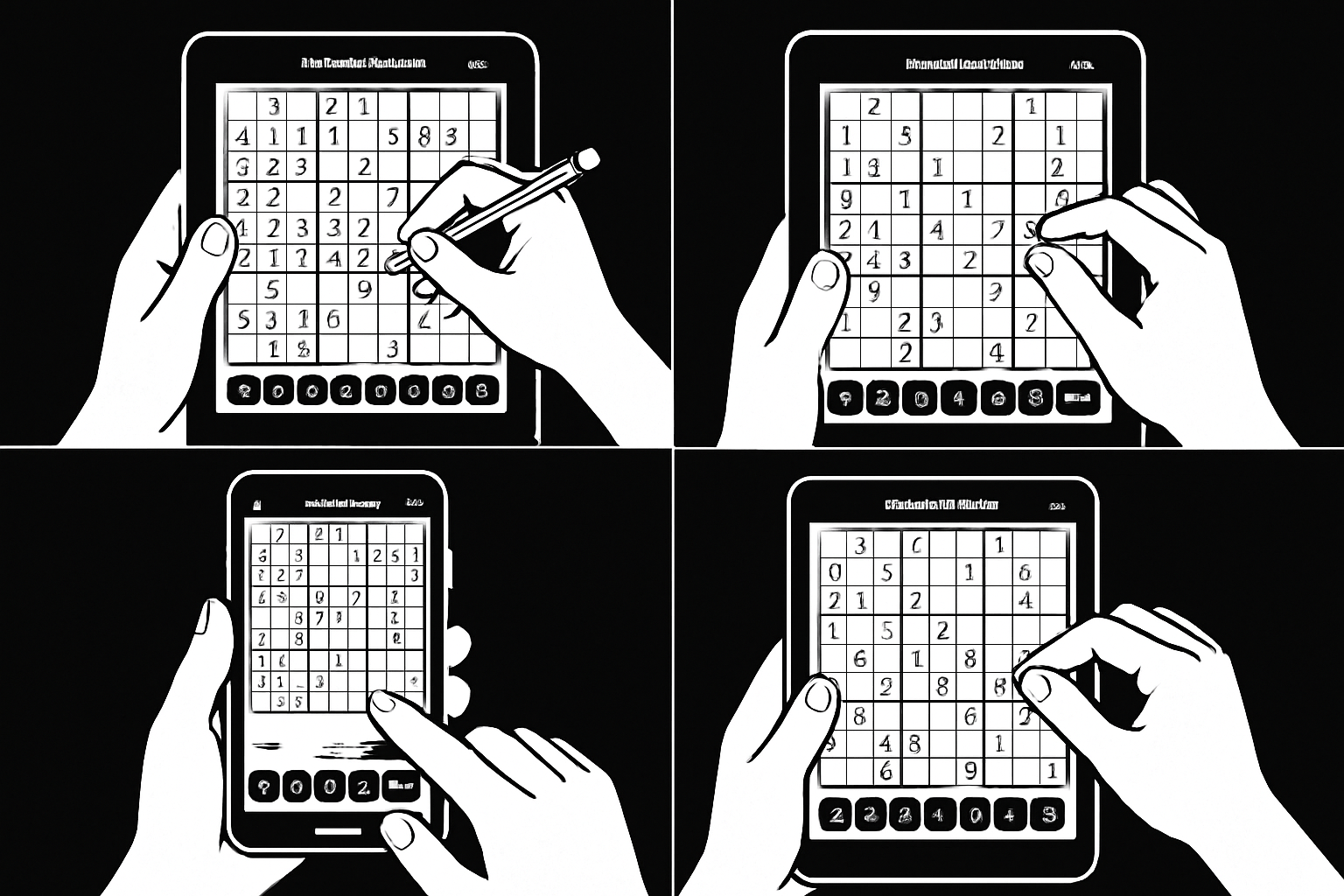
Understanding the Rules
At its core, sudoku new york times challenges you to fill a grid so that each row, column, and 3×3 box contains every digit from 1 to 9 exactly once. No math is involved—it's all about logic and pattern recognition.
Each puzzle starts with some cells already filled. Your job is to use these clues to deduce the missing numbers. The NYT digital version lets you know if you make an illegal move, like repeating a number in a row or box.
Remember: every sudoku new york times puzzle has just one solution. Beginners sometimes think guessing is needed, but logical deduction is always enough. A common misunderstanding is placing duplicate numbers, especially when moving between boxes or forgetting to update pencil marks.
Most errors among new solvers involve accidentally repeating numbers or missing an obvious single. Stay patient and double-check each move to build confidence as you play sudoku new york times.
Setting Up Your Puzzle
You can access sudoku new york times puzzles via the NYT website, mobile app, or even the print edition. Choose a difficulty that matches your comfort level—Easy for a quick warmup, or Expert if you want a challenge.
In the app, customize your experience. Switch between light and dark themes, enable pencil mode for notes, and adjust font size for readability. Many users prefer digital play for features like auto-saving progress and resuming puzzles later.
Printing puzzles is simple for offline play. Just select the print option on the web or app. Customizing your sudoku new york times interface makes solving more enjoyable and helps you focus.
Digital features like progress tracking, color-coded notes, and accessibility settings are favorites among players. Setting up your puzzle environment right can really boost your sudoku new york times experience.
Step-by-Step Solving Process
Solving sudoku new york times puzzles is all about a logical process. Start by scanning the grid for obvious placements—these are called "singles," where only one digit can fit in a cell.
Next, use pencil marks to jot down possible options for empty cells. This visual aid helps you see patterns and spot eliminations. As you progress, use logic to rule out candidates. Techniques like naked pairs (where two cells in a row or box share the same two possibilities) can help narrow things down.
Always double-check rows, columns, and boxes before entering a number. Continue this cycle of scanning, noting, and deducing until the puzzle is complete. For a more detailed breakdown, check out this How to Play Sudoku resource for extra step-by-step examples.
Average solve times vary: Easy puzzles often take under 10 minutes, while Expert levels can stretch much longer. With practice, your sudoku new york times solving speed will improve.
Common Mistakes and How to Avoid Them
Everyone slips up now and then—even experienced sudoku new york times solvers! The most common mistake? Guessing without enough logic. This can lead to tangled grids and unsolvable puzzles.
Other frequent errors include:
- Repeating numbers in a row, column, or box
- Forgetting to update pencil marks when a cell is filled
- Rushing and missing unique solutions
A single error can ripple across the entire puzzle, so get in the habit of double-checking your moves. NYT's digital version highlights mistakes in real-time, making it easier to catch issues early. Error rates are highest among new solvers, but consistent practice quickly lowers them.
Tips for Beginners
If you’re just starting with sudoku new york times, begin with easy or mini puzzles like 4×4 or 6×6 grids. Use pencil marks generously and focus on one section of the grid at a time.
Try to solve at least one puzzle daily—regular practice is the best way to improve. Don’t hesitate to use the built-in hints and check features in the NYT app. They’re there to support your learning.
Track your progress and celebrate small wins. Many new sudoku new york times players see noticeable improvement in just a week. Retention rates for newcomers are high, especially when puzzles are approached as a fun brain workout.
Advancing Your Skills: Intermediate Techniques
Once you’re comfortable with basics, it’s time to step up your sudoku new york times game. Learn to spot naked and hidden pairs or triples, where certain numbers are locked into specific cells.
Use block and column interactions to eliminate possibilities. Try X-Wing and swordfish methods for tougher puzzles—these look for repeating patterns across rows and columns.
Avoid traps like assuming a number fits without checking all possibilities. Apply these intermediate techniques to medium or hard sudoku new york times puzzles to keep progressing. Studies show that a significant percentage of solvers move up to higher difficulties within a few months of regular play.
The more you practice these strategies with sudoku new york times, the more confident you’ll feel tackling any grid.
Digital Features and Tools in NYT Sudoku 2025
In 2025, sudoku new york times has evolved into a fully immersive digital experience. Whether you’re a casual player or a competitive solver, the NYT’s digital tools make solving Sudoku more accessible, interactive, and enjoyable than ever before. Let’s explore the standout features that set sudoku new york times apart in the modern puzzle landscape.
NYT Games App and Online Platform
The NYT Games app is the digital home for sudoku new york times fans. Its clean interface welcomes both beginners and experts with intuitive navigation and crisp visuals. Players can enjoy:
- Real-time error checking to catch mistakes as you go
- Automatic solution validation when you finish a puzzle
- Progress tracking, daily streaks, and achievement badges
- Social features for sharing solves and friendly competition
Setting up your profile is simple. You can sync your sudoku new york times progress across devices, ensuring your stats and streaks are always up to date. In 2025, over 3 million daily users log in to play, reflecting the game’s enduring popularity. For a detailed look at how the platform has grown, see The New York Times Games.
Accessibility and Customization Options
Sudoku new york times prioritizes accessibility, making sure everyone can join the puzzle fun. You’ll find:
- Adjustable font sizes and high-contrast color themes for better visibility
- Keyboard shortcuts for faster desktop play
- VoiceOver and screen reader compatibility for visually impaired users
- Customizable grid sizes and background themes
Adapting sudoku new york times for your preferences is effortless. For example, you can switch to a dark theme at night or enable larger grid numbers for easier reading. In 2025, more than 15% of users regularly use accessibility features, showing NYT’s commitment to inclusivity.
Hints, Notes, and Error Checking
Mastering sudoku new york times is easier thanks to robust digital aids. The app offers:
- A hint system that gives subtle nudges without revealing the whole solution
- Pencil marks and note-taking directly in the grid
- Automatic error highlighting to prevent repeated mistakes
- Undo and redo buttons for flexible solving
- Locking completed numbers so you don’t accidentally change them
Efficient use of notes can be a game-changer for solving complex puzzles. In 2025, over 60% of players use digital aids like hints and pencil marks, making sudoku new york times both challenging and approachable.
Community and Competitive Features
Sudoku new york times isn’t just about solo play—it’s a thriving community. The platform features:
- Global leaderboards and daily challenge rankings
- One-click sharing of completed puzzles to friends or social media
- Lively forums and puzzle discussions for strategy tips
- Special competitions and themed events for added excitement
You can join a tournament or participate in community challenges to test your skills. Community engagement has grown by 25% since 2024, making sudoku new york times the go-to destination for puzzle enthusiasts seeking connection and friendly rivalry.
Strategies for Mastering NYT Sudoku
Ready to take your sudoku new york times skills to the next level? Mastery comes from understanding both the basics and the subtle strategies that set top solvers apart. Whether you’re aiming to finish your first puzzle or shave seconds off your solve time, these techniques and resources will help you become a true NYT Sudoku pro.
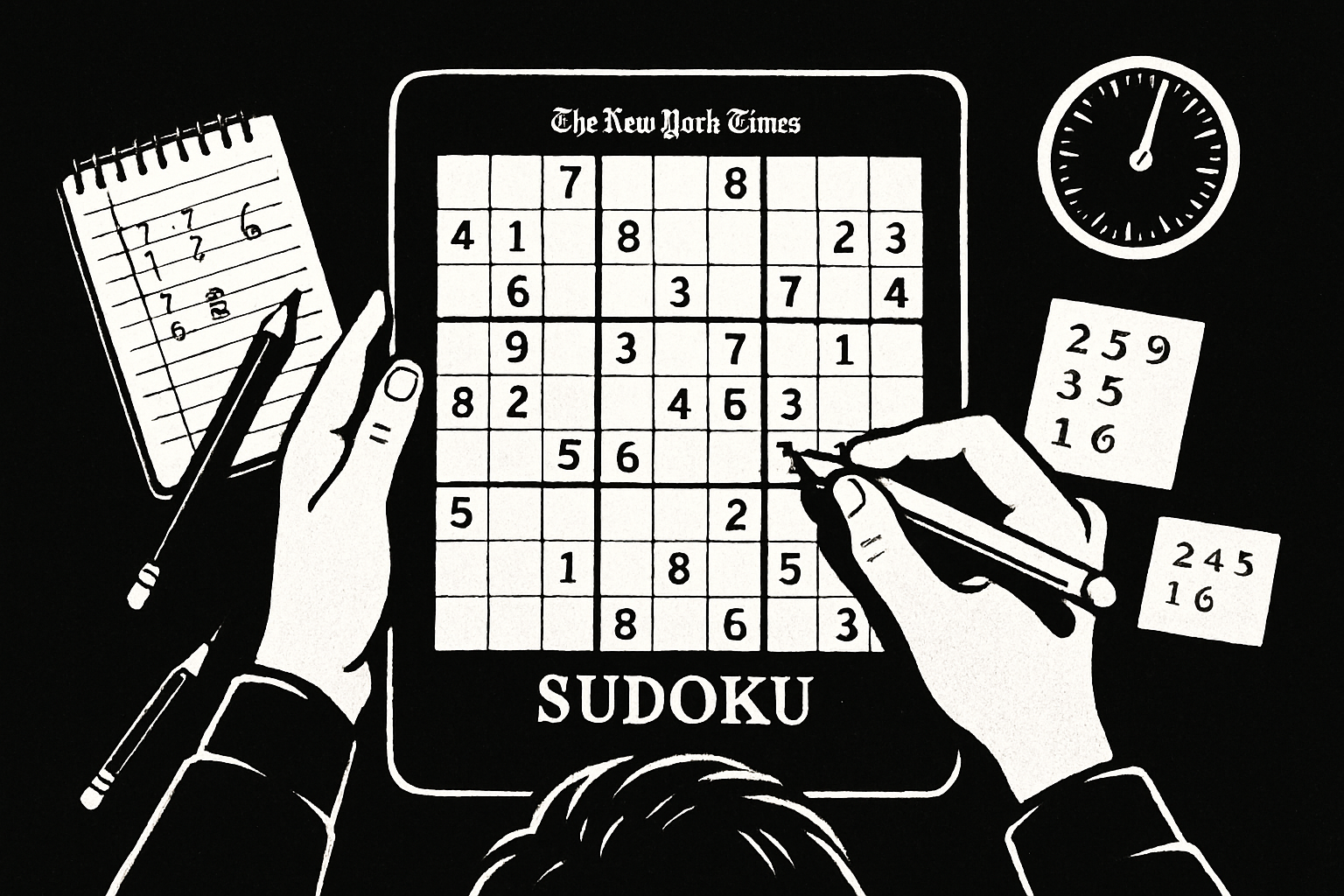
Essential Solving Techniques for All Levels
Every sudoku new york times puzzle, from easy to expert, relies on a few core solving strategies. Start by scanning the grid for obvious placements—these are called singles, where only one number can fit in a row, column, or box.
Use candidate elimination to narrow down options. Write small numbers (pencil marks) in empty cells to track possibilities. Cross-hatching—checking rows and columns to spot missing numbers—is another classic approach.
Common patterns, like naked or hidden singles, appear in almost every sudoku new york times grid. Recognizing these quickly boosts your speed and accuracy. Don’t forget to check for duplicate numbers before finalizing your answers.
Experts balance speed with accuracy. They know when to slow down and double-check, especially in trickier sections. Here’s a quick summary:
| Technique | When to Use | Key Benefit |
|---|---|---|
| Scanning | Early in the solve | Quick placements |
| Candidate elimination | Throughout | Reduces guessing |
| Cross-hatching | Stuck situations | Reveals patterns |
Apply these techniques consistently to build a solid foundation for every sudoku new york times challenge.
Advanced Tactics for Challenging Puzzles
When sudoku new york times throws you a tough puzzle, it’s time to dig deeper into logic. Advanced techniques like swordfish and XY-Wing help you crack harder grids. Swordfish involves finding patterns across rows and columns, while XY-Wing lets you eliminate candidates by linking three cells in a specific way.
Coloring techniques let you visualize candidate chains, making it easier to break through complex sections. Sometimes, you’ll face minimal clue puzzles—these require patience and careful deduction, using forcing chains or even limited trial-and-error (never guess wildly).
Top solvers recommend learning these advanced moves:
- Swordfish
- XY-Wing
- Coloring
- Forcing chains
Use these sparingly, as most sudoku new york times puzzles are solvable with logic, not guesswork. When stuck, step back and look for patterns you may have missed. Practice with higher-difficulty puzzles to build confidence.
Time Management and Speed Solving
Want to solve your sudoku new york times puzzles faster? Set realistic time goals based on difficulty. For example, aim to finish an easy puzzle in under 5 minutes, while harder ones may take 15 minutes or more.
Practice under timed conditions. Use keyboard shortcuts on the NYT app for quick number entry, and keep your pencil marks organized for fast scanning. Efficient note-taking is key—update or erase candidates as you go to avoid confusion.
Many top sudoku new york times solvers keep a timer handy and analyze their solve times after each game. This helps pinpoint bottlenecks and track progress. Remember, speed comes with practice, so don’t rush at the expense of accuracy.
Learning from Mistakes and Building Consistency
Every sudoku new york times player makes mistakes—what matters is how you learn from them. After each puzzle, review any errors. Did you miss a duplicate number or forget to update a pencil mark? Keep a puzzle journal or log to track patterns in your mistakes.
Leverage NYT’s built-in “reveal” and “check” features for instant feedback. If you get stuck, use these tools to understand where your logic went astray. Turning a failed solve into a learning opportunity is the hallmark of steady improvement.
Consistency is key. Play regularly, analyze your errors, and celebrate small wins. Over time, your sudoku new york times accuracy and confidence will soar.
Recommended Resources for Further Improvement
Ready to go beyond the basics? The sudoku new york times archives are a treasure trove of past puzzles for practice. Explore books from expert Sudoku authors for in-depth strategies. Join online forums and communities to discuss tough puzzles and share solutions.
For a deeper dive into the history, techniques, and mental benefits of Sudoku, check out Sudoku: History, Techniques, and Mental Benefits. This resource covers why regular play sharpens your mind and how sudoku new york times fits into your cognitive toolkit.
Use these resources to challenge yourself, learn new strategies, and connect with fellow enthusiasts. The more you explore, the stronger your sudoku new york times skills will become.
Comparing NYT Sudoku to Other Platforms in 2025
Curious how the sudoku new york times experience stacks up against other puzzle platforms? With so many digital options available, it’s worth exploring what makes NYT Sudoku unique and how it compares to top alternatives. Whether you’re a casual player or a daily solver, choosing the right platform can shape your puzzle journey.
How NYT Sudoku Stands Out
The sudoku new york times platform has set itself apart through a blend of editorial excellence and an intuitive digital experience. Every puzzle is carefully curated by a dedicated team, ensuring a consistent challenge and top-tier quality. The NYT’s interface is clean, user-friendly, and packed with features like streak tracking, leaderboards, and progress monitoring.
Community engagement is another major strength. Players can join discussions, compete in daily challenges, and even participate in special events. Many solvers praise the supportive environment and responsive customer support. In satisfaction surveys, NYT Sudoku consistently ranks higher than most competitors, with users citing both the puzzle variety and the seamless gameplay as standout features.
For those seeking a reliable, polished, and engaging daily puzzle, sudoku new york times remains a top choice.
Popular Alternatives and Their Features
While sudoku new york times leads in editorial quality, several other platforms also offer robust features. Popular alternatives include mobile apps, dedicated puzzle websites, and even social Sudoku communities. Each brings its own flavor—some focus on speed-solving, others on vast puzzle libraries or unique variants.
Here’s a quick comparison:
| Platform | Puzzle Types | Difficulty Range | Community | Cost |
|---|---|---|---|---|
| NYT Sudoku | Classic, Mini | Easy–Expert | Strong | Subscription |
| App A | Classic, Variants | Easy–Hard | Moderate | Free/Paid |
| Website B | Classic | All Levels | Active | Free |
For a comprehensive look at how these platforms measure up, check out this guide on Comparing Sudoku Platforms. It breaks down strengths, weaknesses, and user experiences across the most popular options.
Choosing the Best Platform for Your Needs
Selecting the right Sudoku platform depends on your goals and preferences. If you value puzzle quality and a vibrant community, sudoku new york times is hard to beat. But if you prefer free access, unique variants, or a more casual approach, exploring other platforms might be worthwhile.
Consider these factors:
- Range of difficulty levels
- Accessibility features
- Community interaction
- Cost and subscription models
Some solvers enjoy mixing things up by playing on multiple platforms. For instance, a user might start their day on sudoku new york times for the daily challenge, then switch to another app for variant puzzles. Ultimately, the best choice is the one that keeps you engaged and motivated to solve.
Frequently Asked Questions About NYT Sudoku
Sudoku New York Times remains a favorite for puzzle fans in 2025, but even seasoned players have questions. Whether you’re troubleshooting, teaching, or staying updated, these FAQs will help you get the most out of your daily Sudoku experience.
Common User Queries and Solutions
Many Sudoku New York Times users wonder about free access and technical issues. The most common question? How to play without a subscription. While some puzzles are behind the NYT Games paywall, you can often start with a free Sudoku puzzle online to practice.
If you’re having trouble logging in or managing your subscription, try clearing your browser cache, updating the app, or resetting your password. For personalized play, adjust settings for font size, dark mode, and error checks under the app’s gear icon.
Here’s a quick troubleshooting list:
- Can’t access daily puzzles? Check your subscription status.
- Progress not saving? Ensure you’re logged in and online.
- App glitches? Restart or reinstall the NYT Games app.
Sudoku New York Times support is responsive, so don’t hesitate to reach out if you encounter persistent issues.
Tips for Parents and Educators
Sudoku New York Times is more than a pastime—it’s a powerful educational tool. Teachers and parents can use Sudoku to develop logical thinking and patience in learners of all ages. For younger students, start with mini puzzles (4×4 or 6×6) and printable sheets for classroom activities.
Studies show that engaging with Sudoku can stimulate the brain’s executive functions. For a deeper look, explore this study on the role of the prefrontal cortex during Sudoku tasks, which highlights the cognitive benefits of regular play.
Some ways to use Sudoku New York Times in education:
- Assign puzzles as brain-teasers or warm-ups.
- Organize class competitions for motivation.
- Use printable puzzles for screen-free learning.
With its variety of difficulty levels, Sudoku New York Times adapts well to different age groups and abilities.
Staying Updated with NYT Sudoku in 2025
Staying in the loop with Sudoku New York Times is easy. Subscribe to NYT Games newsletters for updates on new features, tournaments, and special puzzle events. The NYT often announces themed challenges or beta tests for upcoming tools—great for those who love being first to try new things.
Join the NYT puzzle-solving community to discuss strategies, share achievements, and participate in leaderboards. Social media groups and forums offer a space for players to connect and celebrate progress.
Newsletter signups have grown steadily, reflecting the ever-expanding community around Sudoku New York Times. Don’t miss out on the latest tips, tricks, and exclusive content—sign up and stay engaged!
Now that you’ve got the inside scoop on how to master New York Times Sudoku in 2025, why not put those strategies into action? Whether you’re just starting out or you’re looking to level up your game with some fresh challenges, the best way to grow is by actually playing. You’ll find a variety of puzzles, from easy warm-ups to brain-bending experts, all ready for you online. Let’s keep that momentum going—sharpen your skills, have some fun, and join a global community of Sudoku lovers. Ready to dive in? Play Sudoku Online!

